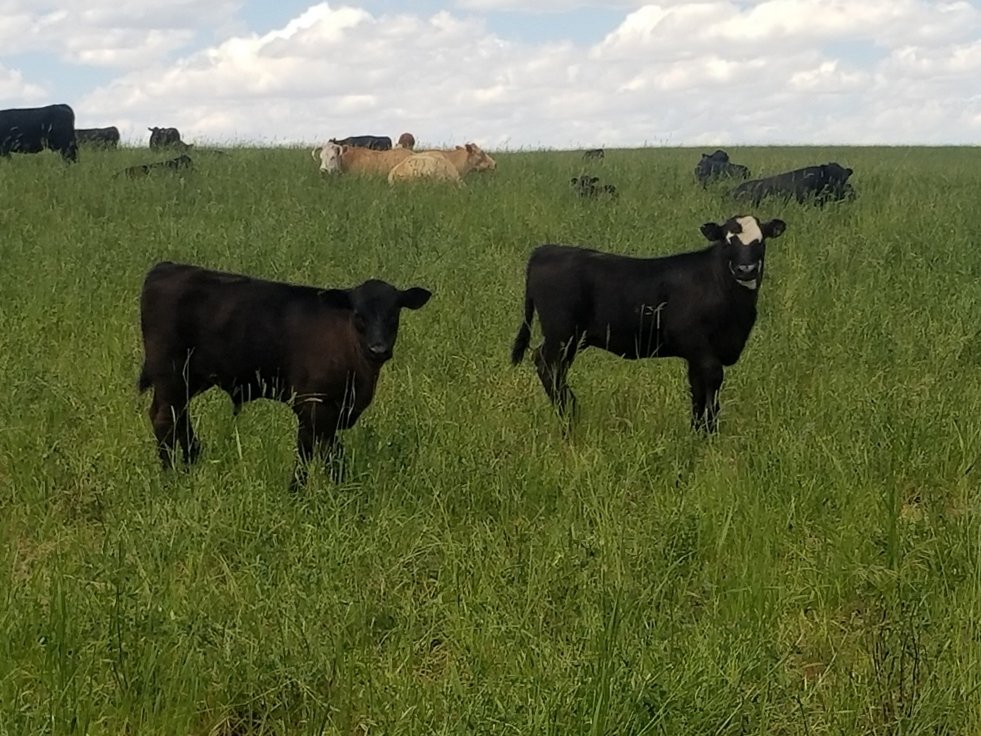McAfee Ranch: Preserving a Family Legacy through Land Conservation
How One Couple is Honoring Their Past by Building to the Future
Landowners: MB and Chuck McAfee
Partner land trust: Montezuma Land Conservancy
Location: Montezuma County
Topics: Water loss, regenerative grazing
Like much of the land in Montezuma County, MB and Chuck McAfees’ 2,300-acre ranch is a mix of dry farmland and rough, rocky terrain dotted with cactus, junipers and other drought-tolerant plants. The McAfees’ property is also like many others in the region in that it is loaded with important cultural sites, some as small as one square foot where a piece of pottery or footing for a dwelling was found.
It’s no surprise, given the history and beauty of the land that’s been in Chuck’s family for three generations, that the McAfees consider this property their legacy and wanted to protect it from development. What is different is how they’ve gone about it—with a voluntary land protection agreement (a conservation easement) in partnership with the Montezuma Land Conservancy (MLC).
Deep roots
The McAfees were raised in the Four Corners Area area—Chuck grew up on the land the couple now owns, and the two attended the same high school. Chuck’s grandparents arrived on a wagon from Nebraska to establish a farm that has grown beans, wheat and alfalfa. Chuck remembers the land always being dry-farmed, a practice that relies on natural rainwater rather than irrigation. It’s a process that was much easier in years past when regular rains helped ensure the land was vibrant and profitable enough to put Chuck and his siblings through college.
In recent years, consistent rains have diminished, and the land has become increasingly arid and brittle, so farming has been less and less reliable. As time and climate have taken their toll, Chuck and MB have explored ways to protect the land. At the heart of their long-term goals is a practice Chuck’s grandparents established: protecting the land from development. Ultimately, the couple moved away from farming—a decision not without heartache, but the McAfees realized that looking longer-term, they needed to explore other options.
More than two decades ago, they put their land under a conservation easement in partnership with La Plata Open Space Conservancy. Under the easement, the McAfees gave up their rights to develop and subdivide the land. In 2001, MLC took over stewardship of the property. Chuck and MB were some of the first landowners involved with the organization, so it was an easy partnership from the start. Under the terms of the partnership, MLC sends staff to the land at least once a year to do a site visit and ensure conservation values are being maintained. They also provide resources to the landowners to assist in stewardship and conservation practices, including contacts with local conservation services and funding opportunities.
In addition to the easement, the McAfees participated in The Conservation Reserve Program, or CRP, with the federal government wherein a landowner agrees to stop growing crops, replant perennial grasses, and let the land rest. While the program required the McAfees to stop farming, it also helped them preserve the land as it existed when Chuck’s family first moved to it, including keeping intact the hundreds of Native American sites throughout the property.
“There’s good science that shows that proper grazing improves the quality of soil and the amount of biomass.”
A new purpose for the land
The McAfees’ management has evolved as the land has changed. At first, the CRP program prohibited grazing, which wasn’t a problem as it wasn’t common practice. But recently, the McAfees recognized they needed to adapt their approach to better handle changing climate conditions and to work intentionally toward improving soil health.
“We depend on water falling out of the sky, but that hasn’t been happening much,” Chuck says. So, when a neighboring rancher approached the McAfees about using the land for grazing her cattle, they were open to the conversation. The couple reviewed her research on the benefits and decided to move the land into a Grassland CRP program that would enable them to open the property to her livestock and better manage the land through droughts. When she told them, “The priorities are healthy soil, healthy forage, healthy cattle,” MB and Chuck knew they were talking with the right person.
The McAfees encourage regenerative grazing, which focuses on building soil health by managing livestock on perennial and annual forages, and support human and ecosystem health, farm profitability, and community and food system resilience. The McAfees’ hope for the partnership with the neighboring rancher is that improving the soil quality will also improve the quality of the forage that the livestock grazes, ultimately improving the quality of the livestock and the protein they provide. “There’s good science that shows that proper grazing improves the quality of soil and the amount of biomass,” says MB.
In addition to the cattle rancher, the McAfees work with a woman who grazes goats, which are prodigious workers and “eat just about everything,” says MB. The two women work in concert to rotate their herds through the 100-acre paddocks that dot the land and optimize a rotation that encourages the grass to grow back fully before it is grazed again.
“They work really tightly together, and we just try to stay out of their way,” Chuck says. The livestock only spends a limited amount of time on any paddock, but it’s enough to see an impact. “We let them hit one spot pretty hard for short periods, and then we leave that land for 18 months or longer to let it restore,” he says.
The McAfees have been measuring soil quality as they’ve undertaken this work, and their initial results indicate the system is working. “So far, grazing is showing progress. It’s improving soil quality and, in seasons of drought, it’s improving biomass production,” MB says. It’s a positive impact the McAfees hope will last well into the future.
A change in conversation and building a legacy
In addition to the improvements to the soil, the McAfees have seen another big shift in conversations in their community. Years ago, they were one of the few families exploring conservation work, but their approach to conservation and the impacts they’re seeing have helped neighbors and community members see the benefits, too. As part of the first group of landowners working with MLC, the McAfees have seen the organization grow to include more than 90 conservation easements serving Montezuma, Dolores and Western San Miguel Counties.
“Don’t get bogged down in the details and focus instead on the values, the reasons for protecting the land, the long-term vision for the land.”
Their advice for others considering a conservation easement? Think about flexibility. “Don’t get bogged down in the details and focus instead on the values, the reasons for protecting the land, the long-term vision for the land,” Chuck says.
Longer term, the McAfees are looking for a way to preserve the progress and the learnings they’re currently experiencing. “We want to find a way to keep things moving forward for the next 30 and beyond,” MB says, adding, “So we are looking for someone or some outfit who can take ownership of the land and keep it in a viable way for these two ranchers and those who follow them to do what they do.”
Produced in partnership:



















